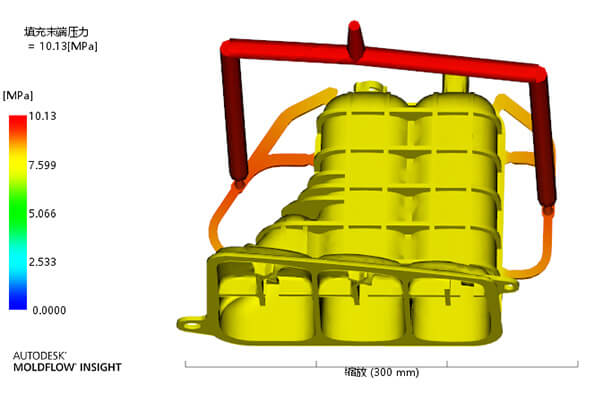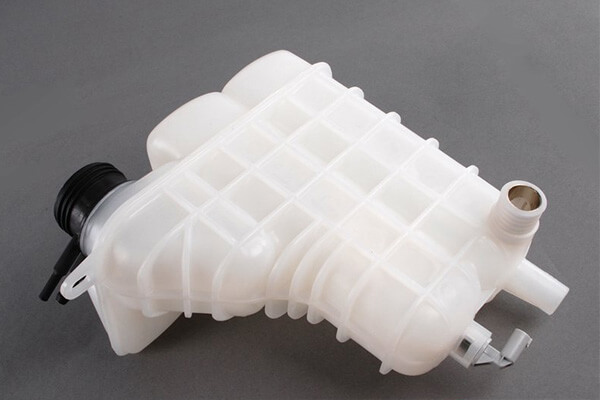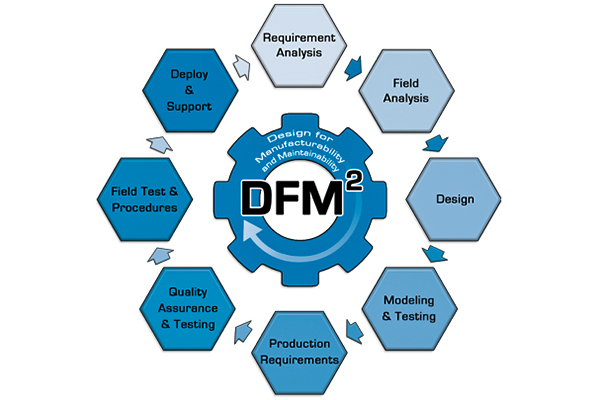Design For Manufacturing Overview
In the production process, we often need to think about how to optimize the product design, reduce the bad products, and seek ways to improve the production process and design ideas. There are a comprehensive overview of design for manufacturing provided according to the above. Design for manufacturing is an approach in product design and engineering, which focuses on designing parts or products in a way that makes them easier and more cost-effective to manufacture. In addition, design for manufacturing can optimize the product design and minimize the product defects.
If your projects need the services of design for manufacturing, please read more or directly consult with us.


Understanding Design for Manufacturing (DFM)
Design for Manufacturing (DFM), also referred to as “design for manufacturability,” is an analytical approach aimed at assessing the compatibility of a product’s design with the manufacturing processes it will undergo.
Rather than being a singular action or a rigid set of rules, DFM encompasses a diverse range of analytical tools employed to draw evidence-based conclusions.
While the terminology may vary, this process, often referred to as “conducting DFM,” is universally applicable across industries. It delivers valuable insights for reducing production costs, enhancing product quality, and minimizing waste and inefficiencies.
Below, you’ll find a broad overview of how to effectively implement DFM principles. Adaptations may be necessary in specific industries to tailor this approach to their unique manufacturing needs.
General Questions of Design for Manufacturing
When we start our projects, we need to know more aspects about design for manufacturing, so that we can make the best of it and maximize its advantages.
What is the Purpose of Design for Manufacturing?
DFM serves a threefold purpose: firstly, to discern the optimal method for fabricating a finished part; secondly, to guarantee that the part’s design is streamlined for the manufacturing process, reducing defects; and thirdly, to curtail costs while upholding product quality and performance.
Who is Responsible for the Review of Design for Manufacturing?
Ideally, the DFM review should be a collaborative effort between the product designer and the manufacturer. This comprehensive review should encompass insights from all parties involved in the process responsible for creating the finished part or related tooling. For intricate projects, this roster may extend to include numerous experts such as engineers, tool designers, fabricators, colorists, material specialists, and others. Each contributor possesses a unique area of expertise, culminating in a comprehensive grasp of the project and its optimization.
When Should Design for Manufacturing Be Performed?
DFM should be executed as early as possible during the design phase, well in advance of any commitment to constructing tools or procuring raw materials. This proactive approach is essential because modifying a design later in the development process becomes progressively more arduous and costly as the project advances. Beyond a certain point, it may become infeasible. Therefore, the most substantial cost savings materialize when perfecting the design, both for the finished part and any associated tooling, occurs before actual production commences.
How Long Does a Design for Manufacturing Take?
The duration required for a comprehensive DFM review directly corresponds to the intricacy of the design. Some projects are relatively straightforward, possibly involving the application of a well-established and stable manufacturing method, necessitating only a few hours. Conversely, certain plastic injection molding projects may demand weeks of computer modeling, testing, iterative adjustments, and re-testing before attaining the optimal solution.
How Does Design for Manufacturing Facilitate Cost Savings?
In addition to rectifying design flaws, a DFM review can unveil potential cost-saving opportunities in several ways:
- Streamlining the number of processing steps.
- Eliminating superfluous or redundant design elements.
- Creating modular or multipurpose designs.
- Reducing the quantity of connectors or fittings.
- Incorporating readily available components.
- Employing standard or recycled raw materials.
- Reutilizing or modifying existing fixtures.
- Simplifying assembly and disassembly.
- Relaxing tolerances.
- Diminishing the count of Critical To Quality (CTQ) dimensions.
Why is Design for Manufacturing Important?
Given the multitude of advantages outlined above, it becomes evident that DFM should not be an afterthought but rather an integral component of a new product introduction strategy. Effective DFM hinges on clear communication between the designer and the manufacturer, serving as the most effective means to avert preventable errors as the product development process unfolds.
Performing a Design for Manufacturing Analysis
As previously mentioned, every new product development project is distinctive, and there is no single guide that encompasses all aspects across industries. However, let’s examine a hypothetical part produced in a contemporary CNC machine shop as an illustration.
Principle One: Clarify Objectives
What are the design objectives?
The product or part’s intended purpose, its target audience, operating conditions, and rationale must be defined. These inquiries are interconnected, and the manufacturer should possess this information at the project’s outset. The product designer needs to discern their priorities, which could encompass various aspects such as:
-
- Strength, durability, and corrosion resistance
- Cosmetic appearance
- Price
- Precision
- Environmental impact
- Lightweight
- Time to market
Only by comprehending the designer’s intent can the manufacturer provide insights or propose alternative approaches to efficiently fulfill the customer’s objectives.
Principle Two: Manage Expectations
To achieve the design intent, it is typically necessary to make concessions in less critical areas to accomplish more vital objectives.
For instance, highly precise and intricate components crafted from exotic materials are unlikely to be economical or rapid to manufacture. Thus, a DFM analysis commences by identifying areas where compromises are needed—referred to as “managing expectations.”
Principle Three: Design for the Process
Designs should be developed with the manufacturing method in mind, rather than attempting to force a process for which it is unsuitable.
For instance, a child’s rubber duck can be efficiently and economically produced through plastic injection molding, which would not be the case if it were machined from a solid material block. In this context, product developers should heed the manufacturer’s advice, which may recommend adjustments in the design to align with equipment and process requirements.
Principle Four: Design for the Materials
Product designers must consider the unique attributes of the raw materials they use while ensuring compatibility with the chosen process. Any shift in materials may necessitate adjustments in the manufacturing process, necessitating advance resolution.
Furthermore, a thorough DFM analysis should highlight instances where the selected material may not be suitable for the application, emphasizing the importance of manufacturers having this information upfront to propose viable alternatives.
Principle Five: Confirm Dimensions and Tolerances
Irrespective of the end product, every blueprint should distinctly specify the nominal dimensions of major features and permissible deviations from those nominal dimensions.
While this is standard practice, the most prevalent design error, in our experience, results from excessively tight and unnecessary tolerances. A comprehensive DFM review scrutinizes all dimensions, scrutinizing any overly restrictive tolerances. This is because tight tolerances are more challenging and time-consuming to achieve, often at a higher cost, and may not necessarily yield superior results.
Competent CNC machine shops employing modern equipment typically provide standard tolerances that are more than sufficient for all but the most demanding tasks. This approach is the most effective means of saving time, money, and avoiding frustration in most CNC machining projects, applicable to various other manufacturing processes.
Principle Six: Resolve Design Conflicts
A conflict arises when a desired feature cannot be realized using the manufacturing process, or it necessitates compromising another aspect of the design.
For example, in CNC machined parts, undercuts pose a challenge because the machine tools operate within direct line of sight of the machine spindle, making it impossible to create undercuts if access to that area is obstructed.
In such situations, the design must be adjusted to eliminate the undercut. This underscores the significance of product designers consulting with manufacturers in the early stages of design, prior to committing resources to a part that cannot be feasibly produced.
Sungplastic’s DFM Services Helps with Your Production Projects
DFM (Design for Manufacturing) is typically combined with various manufacturing processes, achieving higher efficiency, lower costs, and fewer production issues.
Our DFM services include:
Injection Molding
Our DFM can help designers optimize the shape, wall thickness, and injection molding process of plastic parts to reduce defects and improve production efficiency.
Machining
For machining processes, our DFM can consider how to design parts to reduce cutting operations, lighten cutting loads, and thereby improve process efficiency.
Precision Manufacturing
For processes requiring high precision, such as microfabrication and precision instrument manufacturing, our DFM is critical to ensuring high-quality end products.
Welding
In welding processes, our DFM can guide how to design joints to minimize stress concentrations and welding defects.
Assembly
Our DFM also covers the assembly process of products, including how to design parts to simplify the assembly process, reduce assembly costs, and improve assembly accuracy.
Casting
In casting, our DFM can guide how to design castings to avoid porosity, cracks, and other casting defects.
Electronics Manufacturing
Our DFM is also crucial in the design of circuit boards and electronic components to ensure easy component placement and connections, as well as minimizing the complexity of circuit board layers.
If you have specific requirements about your products, we also provide customization.
Our level of expertise will make you feel more satisfied. Please discuss your project with us and the best solution will be provided.
Get a free quote and design analysis today.
We’ll reply to you within 6 working hours.
We respect your privacy.
+86 139 2927 4777 (WhatsApp, Wechat)

